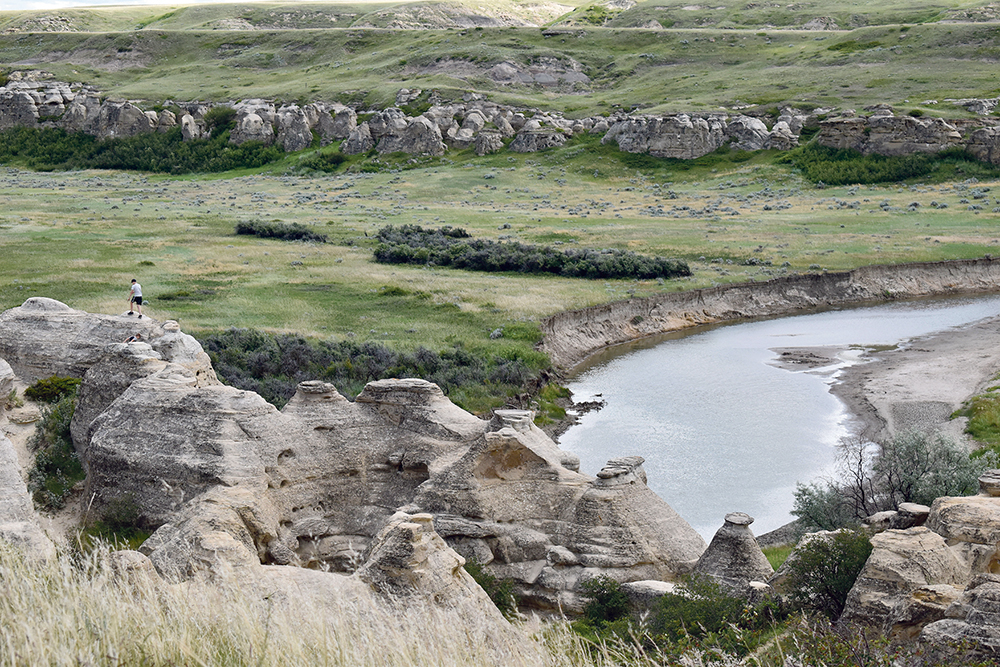International Joint Commission to study Milk and St. Mary’s rivers

Shot in the arm for efforts to improve water access on both sides of the border is the goal for new agreement
A catastrophic failure of a Montana irrigation structure in 2020, which saw the Milk River dry up on both sides of the United States-Canada border, may not have been the driver of a new study into a 100-year-old international water agreement. But it provides fodder for why it’s needed.
The four-year international study announced in November will examine both the Milk and St. Mary’s rivers, which flow through both countries along the Alberta-Montana border. Its aim is to identify needed structural and non-structural improvements to maintain water access on both sides.
The agreement first enacted in 1921 regulates water allocations from both rivers and is overseen by the International Joint Commission, which is responsible for regulating waterbodies that straddle the border.
“Changing climate conditions increases the timeliness and importance of this work. I believe we have established a small and nimble study board able to work binationally and recommend more efficient water apportionment for the future,” Pierre Béland, IJC commissioner, said in a statement.
Tim Romanow, Milk River Watershed Council Canada executive director, said the study will be a shot in the arm for efforts to improve water access on both sides of the border.
“I think this is the first time that the IJC has commissioned a report or project that is looking at it as one basin — both Montana and Alberta portions of the watershed — and trying to find opportunities to maximize opportunities for both countries,” he said. “Instead of being protectionist.”
Both rivers have their headwaters in northwestern Montana. The St. Mary’s flows into the South Saskatchewan River Basin and the Milk River follows the international boundary on both sides of the border before ultimately flowing into the Missouri River.
Under terms of the international agreement, Canada takes up to 75 percent of water allocations on the St. Mary’s and the U.S. takes the same percentage on the Milk River.
The remaining 25 percent portion goes to the other country respectively.
Romanow said the study will investigate how both rivers operate in conjunction with irrigation networks and possible increases in storage capacity that would be managed by both countries.
“There are some real opportunities to share tradable water credits or looking at different ways to extending the balancing period possibly and making sure we’re able to accommodate those users on both sides,” said Romanow.
About 80 private irrigators on the Canadian side drawing water from the Milk River are currently limited by the natural stream flows, which Romanow hopes the study will address.
“It’s getting tighter. The margins of error and the margins between our irrigators being able to make it through a full season without hitting that zero flow and then being cut off by the middle of July has gotten really tight,” he said.
Montana’s Jennifer Patrick, program manager at the Milk River board of control, said in addition to the IJC study, Washington has committed $100 million to improve the irrigation infrastructure in her state.
But it remains to be seen whether all those funds can be accessed, whether there can be agreements hashed out with Montana’s Indigenous stakeholders and whether regulatory changes can be made that will allow water conservation efforts to be expanded into increased irrigated acres.
“Antiquated is the best word,” said Patrick of Montana’s Milk River irrigation system. “We’re very 50 years ago.”
The Montana system is based on irrigated acres rather than water volumes, which provides little incentive for efficiencies, said Patrick, adding there is no incentive to invest in pivots when no expansion benefits will be realized from conservation.
One of the reasons for last year’s failure of Montana’s Milk River irrigation infrastructure was a historic lack of investment.
Patrick said with farmers required to pay for 75 percent of improvements, it’s an opposite system to that found in southern Alberta.
“There isn’t a benefit to bring your farm into the 21st century because there are no incentives,” said Patrick.
That situation, coupled with drought conditions this year, has led to a lot of northern Montana farmers and ranchers going out of business.
If water storage can be improved, it would make a significant impact to the situation, she said.
“When we see the runoff, you’re not ready to irrigate in April and the water isn’t beneficial. If we can put it in storage and take it in July and August, it’s such a better scenario.”
Romanow is optimistic that the study will lead to improvements on both sides of the border.
“There is a good commitment from both federal governments to see it through and to have practical recommendations,” he said.
Doing nothing could see Canadian farmers, ranchers and municipalities reliant on the Milk River left to find another source of fresh water, Romanow said.
Source: producer.com

